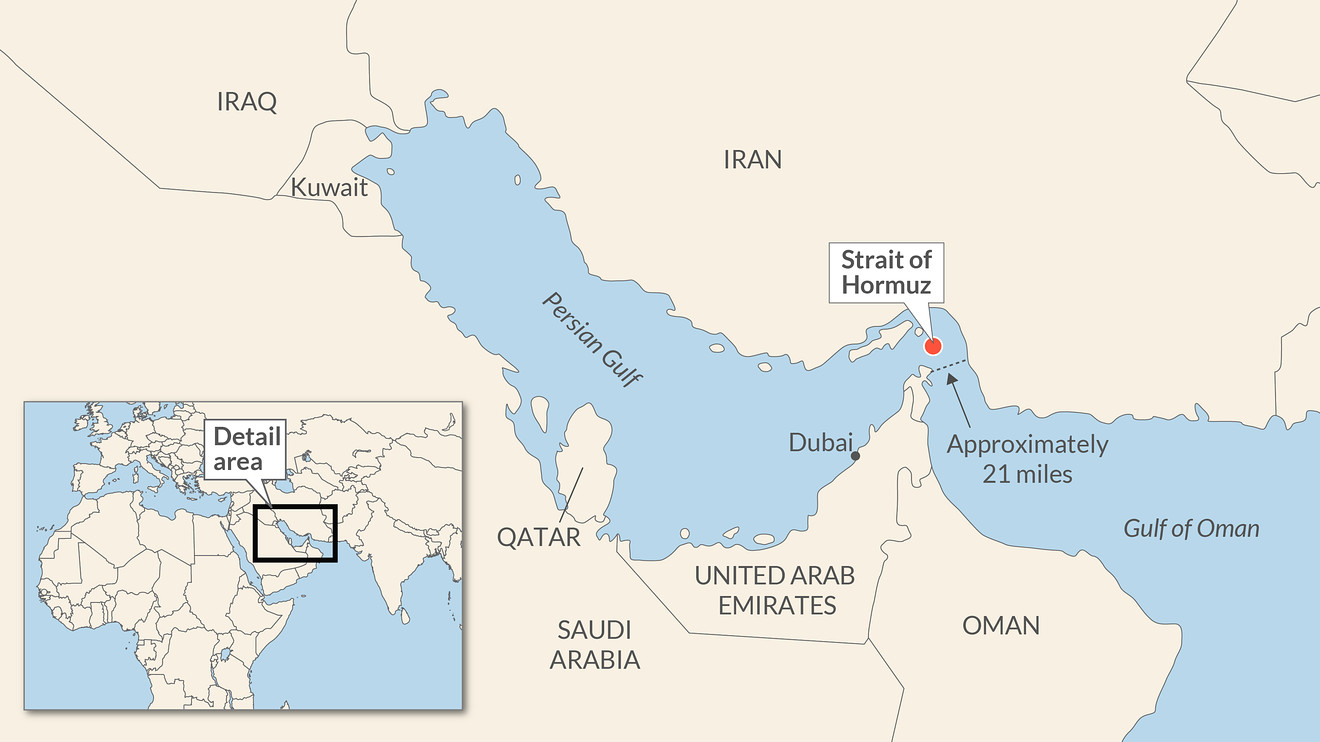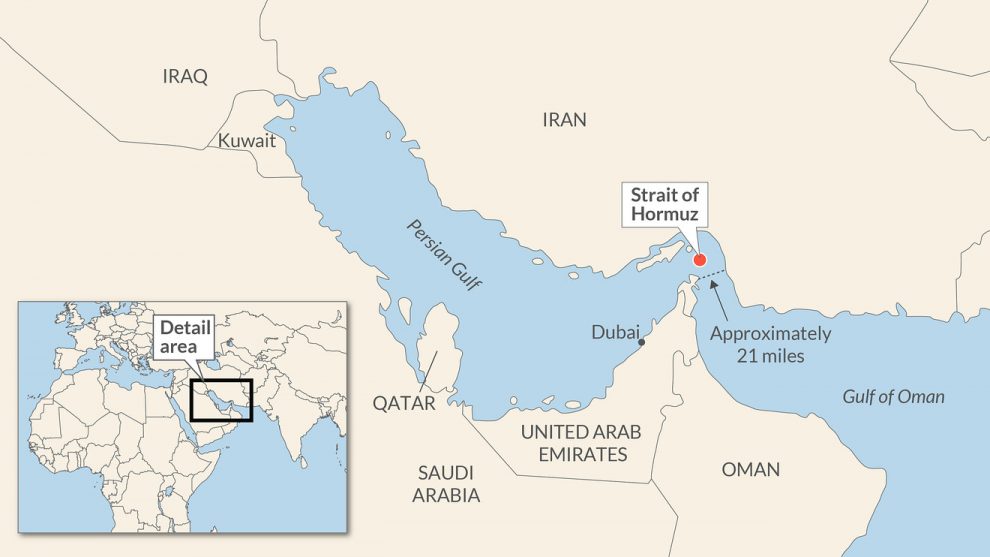
The Strait of Hormuz, the world’s most sensitive oil-transportation choke point, remains in focus, after two tankers were attacked and damaged off the coast of Iran on Thursday.
U.S. Secretary of State Mike Pompeo blamed Iran Thursday for the attacks and U.S. Central Command released a video that it said showed a vessel operated by the Islamic Revolutionary Guards removing a mine from one of the ships. President Donald Trump on Friday morning told Fox News, “Iran did do it.”
Iranian officials have denied responsibility, suggesting the U.S. or its allies were behind the attacks.
The attacks follow a May incident that saw four tankers damaged in what Gulf authorities deemed “sabotage.” The events follow the U.S. decision to reimpose sanctions on Iran over its nuclear program, with Washington moving this spring to end waivers for several importers of Iranian crude.
While the May events had triggered some volatility, the market “had mainly moved on from the Middle East after President Trump publicly insisted that he did not want war with Iran and reignited trade war concerns with his tariff tweets,” said Helima Croft, global head of commodity strategy at RBC Capital Markets. “However, we believe that escalation will likely be the order of the day as long as the United States continues it’s ‘maximum pressure’ policy and insists that Iran completely abandon its revolutionary agenda in order to receive economic relief.”
The two ships hit in Thursday’s attacks — one a Norwegian-owned tanker carrying naphtha and the other a Japanese-owned tanker — had recently traveled through the strait, which connects the Gulf of Oman to the Persian Gulf.
Oil futures US:CLM9 BRNQ19, +1.08% ended more than 2% higher on Thursday, but had surged by more than 4% at session highs. Oil futures added to gains on Friday, but are lower for the week. Stock-market investors shrugged off the incident, with major indexes, including the S&P 500 SPX, -0.17% the Dow Jones Industrial Average DJIA, -0.07% ending higher on Thursday. Stocks were slightly lower Friday but on track for weekly gains.
Read: Escalation in Mideast oil attacks could $7 per barrel to price
Here’s a look at the Strait of Hormuz and why it’s so important to the global crude-oil market.
Where is the Strait of Hormuz?
The Strait of Hormuz is a narrow waterway that, as noted, links the Persian Gulf with the Gulf of Oman and the Arabian Sea.
At its narrowest point, the waterway is only 21 miles wide, and the width of the shipping lane in either direction is just 2 miles, separated by a two-mile buffer zone.
Why is it important?
Oil tankers carrying crude from ports on the Persian Gulf must pass through the strait. Around 18.5 million barrels a day of crude and refined products moved through it in 2016, nearly a third of all seaborne-traded oil and almost 20% of all crude produced globally, according to the U.S. Energy Information Administration. That makes the Strait of Hormuz the world’s most sensitive oil transportation choke point.
What’s the threat?
Iranian officials in April threatened to interrupt the flow of oil through the strait after the Trump administration said it would end waivers that allow countries to import Iranian oil.
Iran Foreign Minister Javad Zarif, in early May, said the country had no interest in escalating tensions with the U.S., according to Iranian news agency Tasnim. He said Tehran viewed the Persian Gulf and the Strait of Hormuz as “our lifeline” and wanted them “safe, secure and free for navigation of all countries, including Iran.”
The U.S. in May announced it was sending an aircraft carrier group, bombers and a Patriot antimissile battery to counter what the Trump administration said were “clear indications” that Iran and its proxies were preparing to possibly attack U.S. forces in the region, the AP reported. That is in addition to the presence of the U.S. Fifth Fleet, which is based in Bahrain.
Could Iran close the strait?
The Fifth Fleet’s presence has long cast doubt on Iran’s ability to close the waterway, analysts said.
The U.S. naval presence would make it extremely difficult for Iran to choke off traffic, but the country “has the strategic depth to stage one-off attacks on vessels, not just in the critical chokepoints but also in the region’s relatively open waters,” Croft said, in a May research note.
Is a U.S.-Iran military confrontation more likely?
Analysts at Eurasia Group, a political-risk consulting firm, on Thursday said the events raise the possibility of military action between the U.S. and Iran over the next six months. They see a 30% probability of a confrontation over that period.
The attacks seem designed to avoid crossing a threshold that would demand a U.S. military response by remaining difficult to attribute and not targeting U.S. individuals or assets, they said, but argued that the cumulative effect of the attacks will be viewed as a test of U.S. security commitments to its Gulf allies.











Add Comment